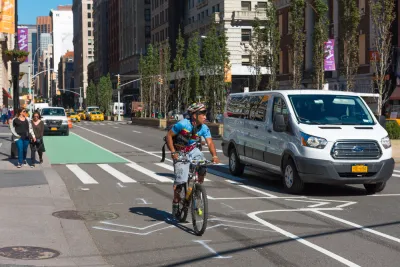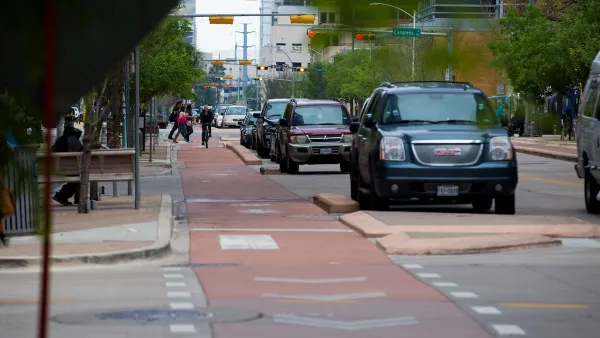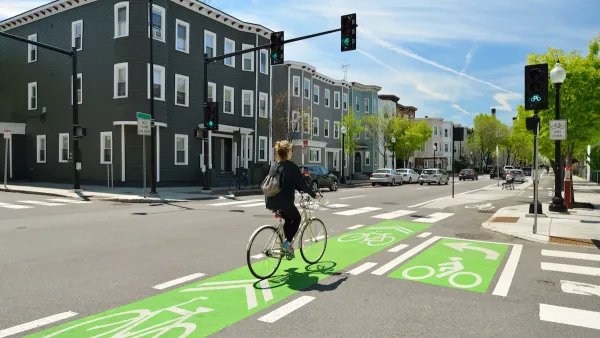Some research suggests that separated and even ‘protected’ bike lanes actually increase the likelihood of car-bike collisions.

After a U.S. State Department foreign service officer died after being hit by a vehicle while riding her bicycle, Diana Furchtgott-Roth of Forbes poses the argument that painted and protected bike lanes could actually raise the risk of crashes.
“The National Highway Traffic Safety Administration estimates that 938 cyclists were killed on the roads in 2020, the latest available data. That’s up by 9 percent from 2019 and the highest number since 1987,” Furchtgott-Roth writes, arguing that bike lanes are “not a safe space” for people on bikes because “it’s impossible to structure bike lanes without vehicles turning into these lanes to get to underground garages, above-ground parking lots, and to make right or left turns at intersections.”
Furchtgott-Roth points to a paradox “originally described by industrial engineer John Forester in his 800-page book Effective Cycling, which boasted seven editions (MIT Press, 2012),” which states that protected bike lanes are more dangerous than shared normal roads. Forester “forecast more car-bike collisions, because it is difficult to make intersections between cycle lanes and roads as safe as normal roads.”
Other studies also find that bike lanes increase the chance of crashes compared to shared roadways. One Colorado study “concluded that separated bike lanes raise the number of crashes by 117 percent compared with shared roadway.” Jan Heine, editor-in-chief of Bicycle Quarterly, wrote “On streets with frequent intersections, separate paths only make cycling less safe.”
According to the article, “In many urban settings the safest place for a bike is in the middle of a car lane, with bike lights and a helmet lamp for the rider, cycling behind vehicles rather than beside them.” This must be coupled, of course, with robust driver education that, essentially, changes America’s driving culture toward an ethos of sharing the road. “All states need to educate drivers, as part of driving tests, to treat cyclists respectfully, just as they treat other vehicles respectfully.”
FULL STORY: Bike Lanes Don’t Make Cycling Safe

Analysis: Cybertruck Fatality Rate Far Exceeds That of Ford Pinto
The Tesla Cybertruck was recalled seven times last year.

National Parks Layoffs Will Cause Communities to Lose Billions
Thousands of essential park workers were laid off this week, just before the busy spring break season.

Retro-silient?: America’s First “Eco-burb,” The Woodlands Turns 50
A master-planned community north of Houston offers lessons on green infrastructure and resilient design, but falls short of its founder’s lofty affordability and walkability goals.

Test News Post 1
This is a summary

Analysis: Cybertruck Fatality Rate Far Exceeds That of Ford Pinto
The Tesla Cybertruck was recalled seven times last year.

Test News Headline 46
Test for the image on the front page.
Urban Design for Planners 1: Software Tools
This six-course series explores essential urban design concepts using open source software and equips planners with the tools they need to participate fully in the urban design process.
Planning for Universal Design
Learn the tools for implementing Universal Design in planning regulations.
EMC Planning Group, Inc.
Planetizen
Planetizen
Mpact (formerly Rail~Volution)
Great Falls Development Authority, Inc.
HUDs Office of Policy Development and Research
NYU Wagner Graduate School of Public Service




























